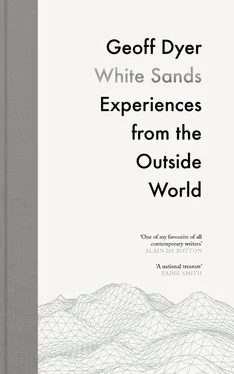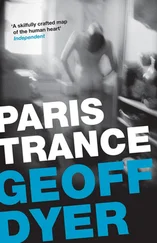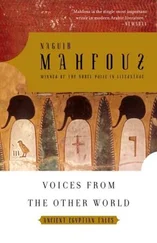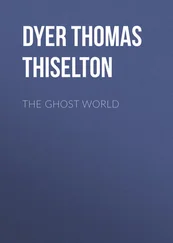‘We are not in Polynesia at all,’ I said. ‘We are in a casino in Vegas called the Tahiti or the Bounty.’
‘But look out there,’ he said. ‘Look at that amazing sea.’
‘You obviously haven’t been to Vegas recently,’ I said.
We only chatted together for five minutes, but that was enough to make him my closest friend in Tahiti. Where, I asked myself, were the modern primitives of the international party scene, the tattooed savages with their piercings and dreadlocks whose company I enjoy even if I cannot count myself among their number? They were nowhere to be seen, that’s where they were. Even when I was nowhere to be seen, when I was alone in my room, I felt a bit embarrassed to be here in this once-natural paradise that had to be cosmetically improved and maintained in order to look perfectly natural. Useful, in an entirely useless way, to discover that embarrassment is not only a public emotion or reaction, that it’s possible to experience it in private, when no one is looking. If embarrassment became something else when internalised in this way, if it began to transmute itself into any kind of insight or resolve, it would have something going for it. Instead, it lingers like a blush which deepens the more intensely you try to wish it away.
Tei raro ae the hatua poito i to outo parahiraa
Gauguin stayed in Tahiti for two years. Then he went back to Paris. Then he came back to Tahiti, but he didn’t like it, because in the time he’d been away it had got all developed and wasn’t savage enough for him any longer, so he decided to go somewhere more remote, to Hiva Oa, north-east of Tahiti, in the Marquesas. He didn’t actually get there until 1901, and in the meantime he moaned and groaned and complained about everything, but he never lost the sustaining artistic belief that he could turn everything that happened to him to creative advantage. It was in this period that he produced some of his greatest paintings, many of which had Tahitian titles— Merahi metua no Tehamana, Manao tupapau —even though his grasp of the language was fairly flimsy and sometimes these titles did not mean quite what they were meant to mean. Things often went badly. Sometimes he found himself on the brink of despair, but always, at the last moment, something turned up to bring him back from the brink or push him over it — but if he did go over it then it turned out that that was a good thing, because going over the brink had a somewhere-over-the-rainbow quality to Gauguin. Not to put too fine a point on it, he was a martyr to his art. One picture was called Self-Portrait near Golgotha —his way of saying that although he was in desperate straits he was going to redeem everything in paintings like this one of himself near Golgotha. All of his other paintings he sent back to France, but the Golgotha one he kept by him and took with him to Hiva Oa so he would always have an image of his own suffering to keep him company and cheer him up. There is a moral in this, as there is a moral in almost everything. In this case the moral is that paradise or what we call paradise is often a kind of Golgotha, as exemplified by the experience of the many tourists who each year find their holiday dream turning into a nightmare as they are stranded at Gatwick for several days due to an air-traffic controllers’ dispute in Spain. Either that or their luxury villa turns out to be a crumbling pit with plumbing problems. Gauguin didn’t care about things like this. He was happy with a basic hut. He didn’t crave a deluxe over-water bungalow, though he was perturbed by the increasingly desperate state of his own plumbing, namely his poxy old schlong, which, frankly, no one in their right mind would chow down on unless they were paid a good deal of money and offered a course of high-dosage penicillin.
The flight to Hiva Oa took three hours, and since, in Gauguin’s day, you couldn’t just hop on a plane and fly anywhere, it must have taken a long time on a boat, because it’s a long way and even now people in Tahiti regard Hiva Oa as the back of beyond, so he really did end up a long way from home, so far away that if he’d gone any further he’d have ended up nearer home, the world being round like a melon.
A simple and single law governs life on remote islands: there is nothing to do except go completely to pieces. Gauguin was no exception, and although he continued working, much of his time on Hiva Oa was spent squabbling with priests and judges and generally making a nuisance of himself. He still painted, but the years of his greatest productivity were behind him, and one day he just died, and although a friend of his bit into his scalp to try to bring him back from the dead it was to no avail, because this time he was not coming back. He had joined the spirits of the dead who look over naked thirteen-year-old girls, as in the infamous painting Manao tupapau, in which, he had said, it is difficult to tell whether she is dreaming of the scary spirit or the spirit is dreaming of her, specifically of her ass, of which we enjoy an unimpeded view. But he had also joined the immortal dead, the great artists of the Western world, the choir visible, and he wanted to lie back and enjoy a view of the posthumous fame to which his strange life was no longer an impediment.
Gauguin is buried in the cemetery near the village of Atuona. There’s a rock with his name on it, and a tree. It merits a stop of about two minutes, max, and visiting it was pretty much a non-experience. It did nothing for me, possibly because, a few minutes later, I came to another memorial, to someone I had never heard of:
NAOPUA A PUUFAIFIAU, SOLDAT:
MORT POUR LA FRANCE 1914–18
There are memorials like this throughout France, but none of these had expressed so powerfully the scale of a catastrophe that had engulfed not just Europe but the world. To think that someone born here, in one of the most remote places on earth, could have been sucked into the First World War: Gauguin’s movement was centrifugal, from the centre to the edge, but it was counter-balanced by this opposite, centripetal movement compelling someone from the fringes of the world to the epicentre of history. From that moment on it would be impossible, even in paradise, to live in a way that was untouched by history. Working backwards from this, we can deduce that our (historically constructed) idea of paradise is, precisely, a place untouched by history.
After visiting the grave, I was scheduled to spend an hour at the Cultural Centre, which is a facsimile of the house Gauguin built for himself. There was one slight problem: it did not exist. Effectively, I was shown the place where the Cultural Centre was going to be (i.e., a building site). As such it was almost indistinguishable from building sites the world over, but they had begun work on reproducing the carved door-frame that Gauguin made over the threshold of his ‘Maison du Jouir’: ‘Soyez Amoureuses et Vous Serez Heureuses.’
The climax of that day’s tour came with the chance to see objects found in Gauguin’s well. Actually, that is to put it too grandly. I should say remains or fragments of objects: some broken bottles, bits of crockery, jars, a syringe, ampoules of morphine and clumps of congealed paint. It was, on the one hand, just a load of old junk. On the other hand, it was still a load of old junk, but no more persuasive exhibition has ever been mounted to demonstrate the status of art as religion, the artist as secular martyr. We were pilgrims and these were the relics, invested with all the majesty of Christ’s sandals or whatever it is they have in Lourdes. And this secular veneration does at least have the benefit of honesty and scepticism. As the curator explained: although they were found in Gauguin’s well, ‘we can’t certify that they were Gauguin’s, but it’s quite possible they were.’
Читать дальше












